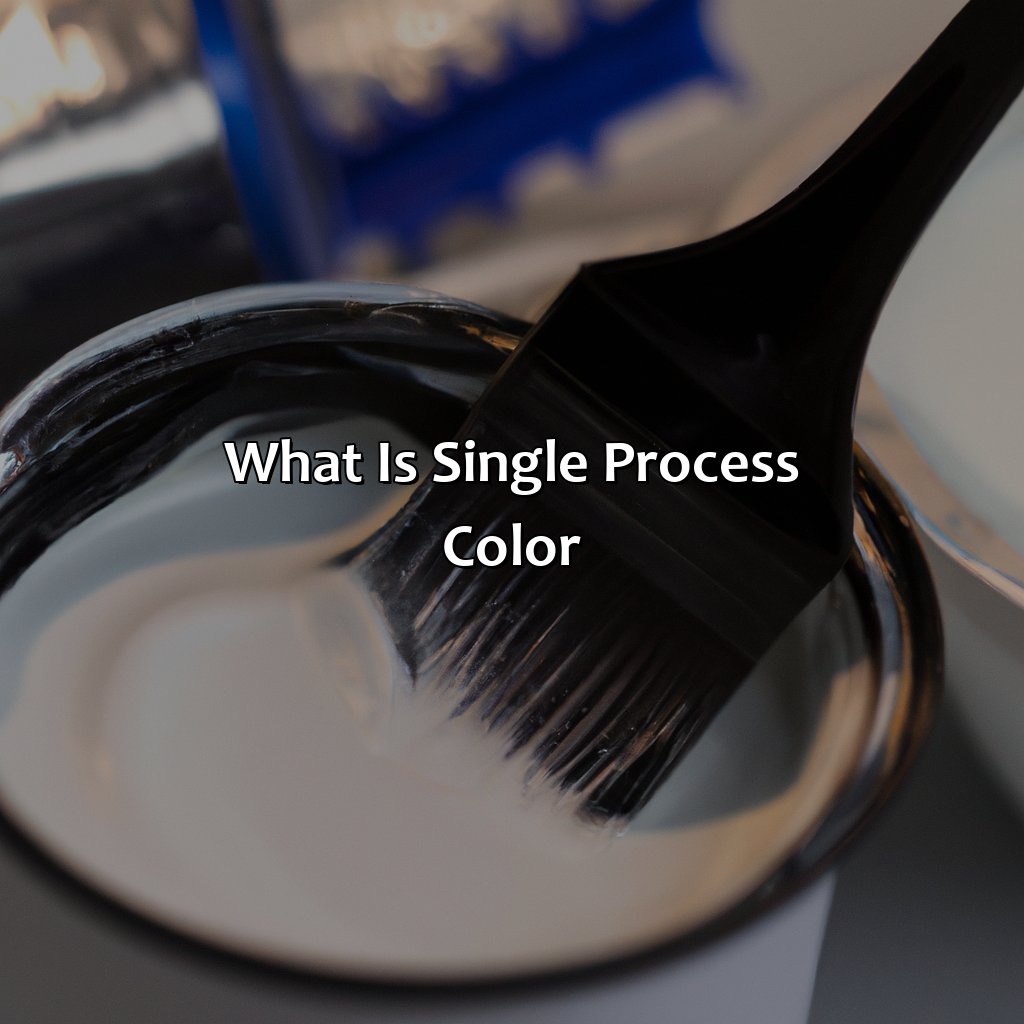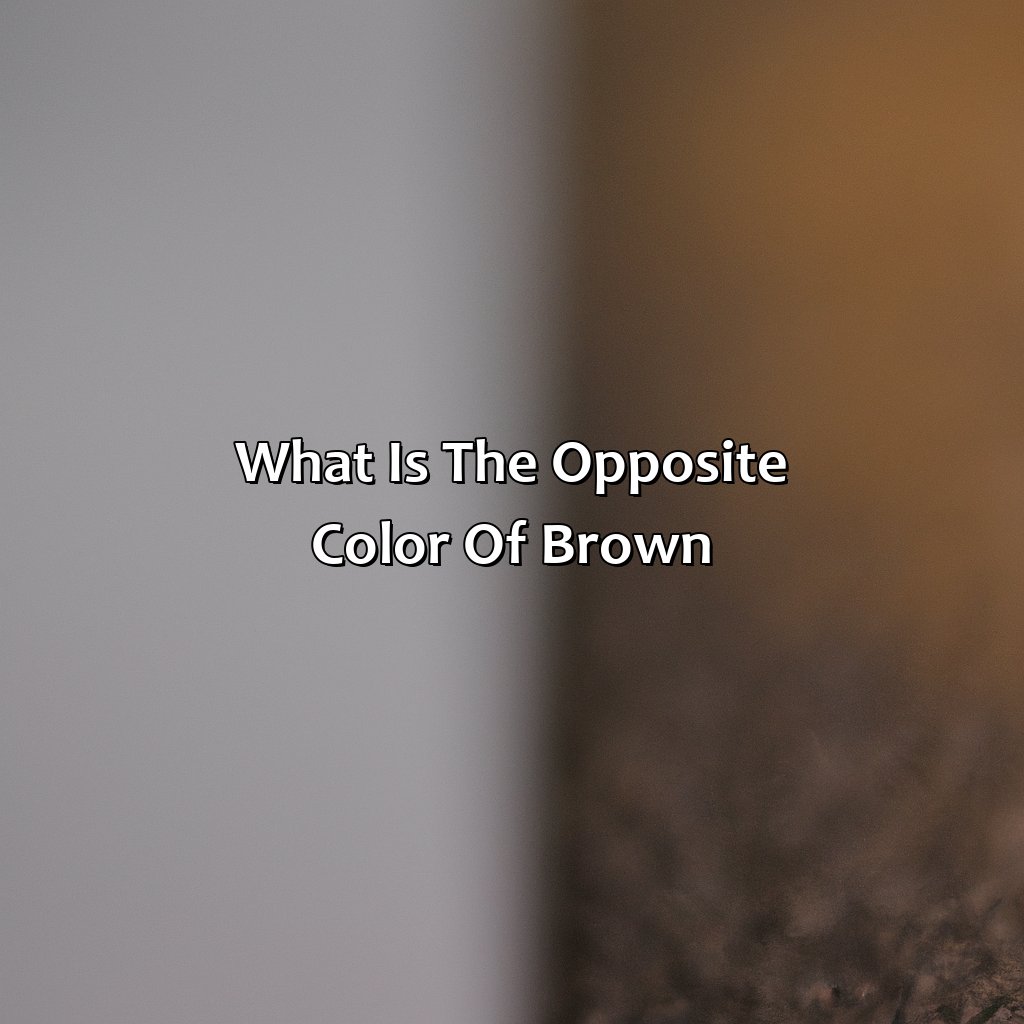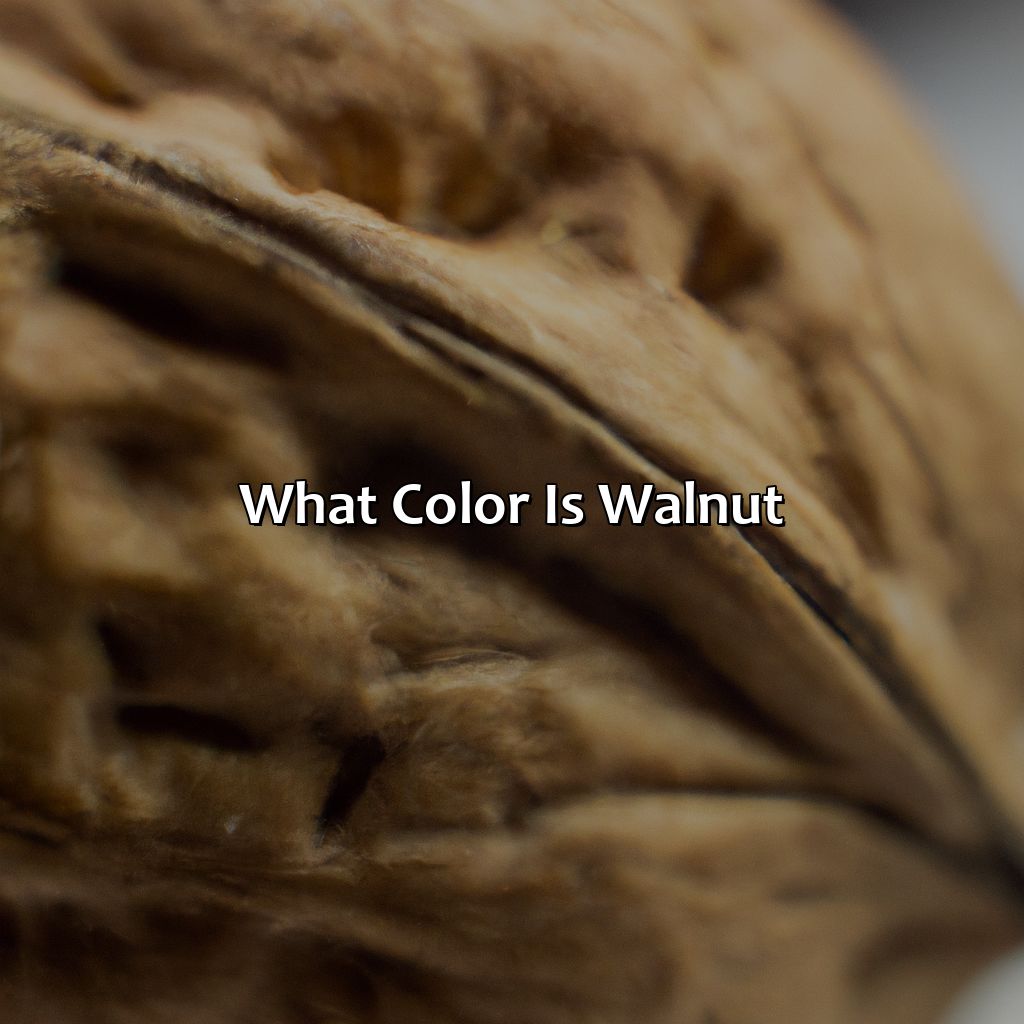Key Takeaway:
- Single process color is a chemical process used to dye hair in a single step, as opposed to a multi-step process involving pre-lightening and toning. This process is designed to improve hair pigmentation, texture, and color longevity, and protect the hair from damage and color fading.
- The benefits of single process color include hair enhancement, color refresh, and color maintenance. There are three types of single process color: permanent, demi-permanent, and semi-permanent, each with its own unique benefits and techniques.
- Choosing the right color for your hair involves considering factors such as your hair type, texture, and pigmentation, as well as consulting a professional colorist and using color charts to ensure the best results. Proper preparation before application, such as hair care and patch testing, can also ensure a successful outcome.
Definition of Single Process Color
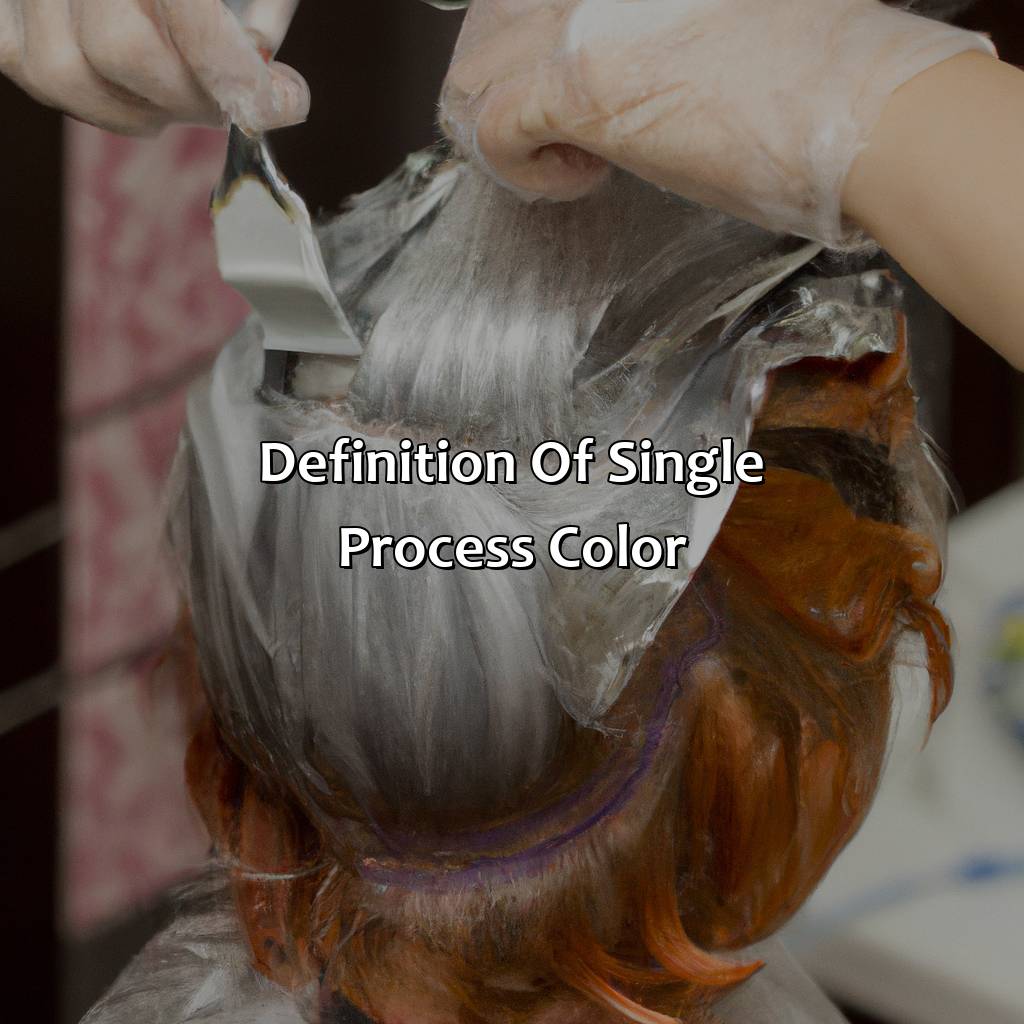
Photo Credits: colorscombo.com by Lawrence Adams
Single process color for your hair is a chemical process. It gives your locks a different hue. Here, we’ll explore its details. This includes dye, color saturation, and how hair’s pigmentation, texture, type, density, porosity, and health can affect the shade. We’ll also discuss fading, longevity, and protection. Lastly, we’ll explain the advantages of single process color, such as hair enhancement, refreshing the color, and maintenance.
Explanation of Single Process Color
Single process color refers to a hair dye application technique that involves depositing one color onto the entire head of hair. This technique involves applying the hair dye directly onto the strands without pre-lightening or bleaching them first. The result is a uniform color saturation for all of the hair. Single process color can be customized to any shade or hue and is suitable for all types of hair textures, densities, and porosities. It is an effective way to change or enhance natural hair pigmentation and achieve a long-lasting, vibrant hue.
One major benefit of using single process color is that it requires less time and effort than other dying techniques like highlights or balayage. Because single process color involves applying only one shade throughout the hair, it can be done quickly in one session with minimal maintenance required afterward.
There are three types of single process color: permanent, demi-permanent, and semi-permanent. Permanent single process color does not wash out and last until new growth emerges whereas demi-permanent color lasts up to 25 washes before fading away. Semi-permanent colors tend to fade quickly after several washes.
When choosing a single process color for your hair, consider factors such as your skin tone, natural hair coloring, eye color, and overall style preference. It’s always best to seek professional advice from a stylist who can evaluate your hair type, density, porosity, health status and recommend appropriate products that will preserve your natural texture while strengthening your locks against damage caused by dyes.
Before applying single process color on your own at-home salon ensure you follow proper preparation rules such as patch testing prior application day, taking measurements of required mixture ratios and amounts involved in vitamin-based formulas that protect hairs from fading during worst-case scenarios involving UV aging etcetera…
A true story showcasing why consultation from a professional before undertaking DIY should be heeded came when I tried purple colored hues at home but forgot consideration about my natural hair pigmentation. The results were not satisfactory and the color quickly faded away after shampooing my hair twice a week, and left without any warranties by product manufacturers.
Single process color: because who doesn’t want a hair enhancement and a color refresh all in one salon treatment?
Benefits of Single Process Color
Single Process Color is a widely used hair enhancement technique that involves applying a single hair color shade all over the head. It is an efficient way of achieving uniform hair shade and covers gray hairs easily. Single Process Color has numerous benefits for individuals seeking a color refresh or a new hair shade.
- Provides Hair Color Consistency: Single Process Color ensures that the entire head gets uniformly colored, delivering an even and consistent look.
- Durable Hair Shade: A single process can result in long-lasting color touch-ups owing to its high pigment production.
- Covers Gray Hair: This color technique can effectively mask grey hairs better than other coloring methods, providing fuller coverage and seamless results.
- Saves Time: As it doesn’t require multiple steps or visits to the salon, single-process hair coloring saves individuals time and money by delivering desired results efficiently.
- Low Maintenance Hair Treatment: Since single process colors are generally darker shades, they require less maintenance than lighter hair hues that need regular touch-ups.
- Versatile Application Methodology: Single process colors provide versatile options for application techniques such as highlights/lowlights, ombre/balayage, and all-over coloration to achieve different looks depending on individual preferences.
Apart from these benefits, consumers must respect vital factors while considering this treatment’s impact on their lifestyle, skin tone, hair type, and maintenance routine. Professional consultation combined with regular hair care intervention following dye application will guarantee optimal outcomes for users.
It is crucial to note that hair salons frequently use Dry Cut Technique alongside Single-Process Coloring to avoid altering the color through wetting during trimming of the user’s locks.
According to Vogue magazine’s 2021 report on best hair care practices available at select salons in New York City – “Hair maintenance after coloring includes the retail purchase of sulfate-free shampoo and conditioner, which assures that the color doesn’t fade. Keratin treatments are also recommended in combating hair breakage caused while dying.”
Overall, Single Process Color is an excellent option for individuals seeking durable hair treatment with low color maintenance requirements to enhance their natural look or embark on a new hair shade experience.
Why settle for one shade when you can have a whole spectrum of options with these types of single process color?
Types of Single Process Color
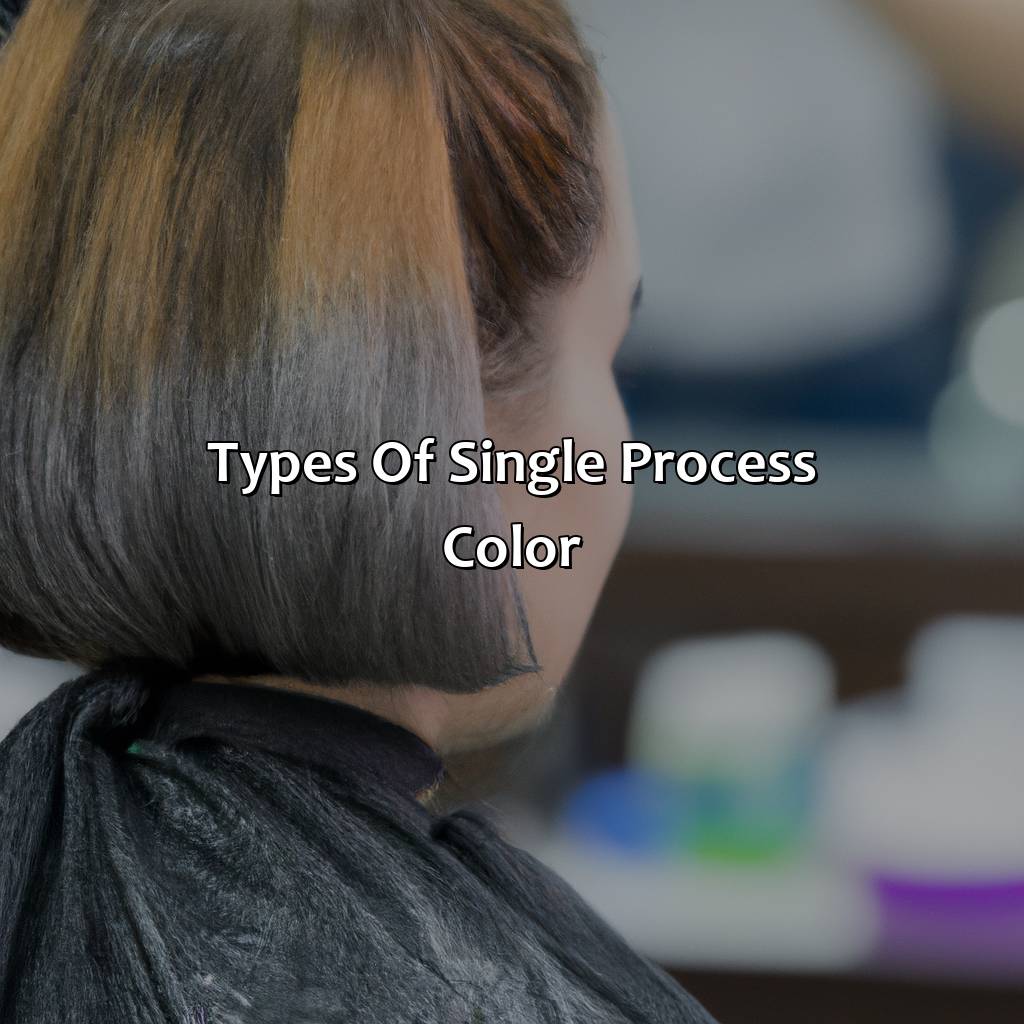
Photo Credits: colorscombo.com by Lawrence Thompson
Do you know about the types of single process hair color? Permanent, demi-permanent and semi-permanent. Let’s find out which one is best for you. We’ll explain the benefits and drawbacks of each.
- Permanent color changes your hair completely.
- Demi-permanent and semi-permanent colors are less intense. They also create tones, shades and contrast. It all depends on your hair’s texture, porosity and health.
Permanent Single Process Color
Permanent Color is a type of Single Process Color that employs a combination of ammonia and hydrogen peroxide to penetrate the hair follicles and permanently change the hair color. It provides full coverage, long-lasting results, and can cover grey hair effectively. This type of color has a higher level of ammonia than other types which may cause more hair damage, breakage, split ends, and dryness if not properly hydrated.
Compared to Demi-Permanent or Semi-Permanent Single Process Colors, Permanent Single Process Colors are ideal for individuals who want a complete hair transformation from one color to another and prefer a low maintenance routine. Its long-lasting effects are suitable for those looking for consistent color without regular touch-ups. However, it should be noted that this type of color is not recommended for frequent use as it may lead to significant damage with time.
Unlike temporary colors, permanent colors can alter the natural pigment of the hair strand deeply and provide lasting effects thus considered as popular options in professional salons worldwide. To minimize the potential harm caused by permanent coloring chemicals, hydration before and after application carries great importance.
In recent years scientists have managed to reduce ammonia levels in different Permanent Single Process Colors products indicating innovative ways mitigating potential harm while maintaining best results.
Give your hair a dimensional boost with demi-permanent single process color – because flat hair is so last season.
Demi-Permanent Single Process Color
Demi-permanent hair color is a type of single-process coloring that deposits color onto the hair shaft for longer-lasting results compared to semi-permanent hair color. The formula contains a mix of permanent and semi-permanent dye molecules, which are small enough to penetrate the hair cuticle but do not fully embed in the cortex. This type of color works best for gray coverage or subtle changes in existing hair color tones, shades, contrast, depth, dimension, placement and blending. It offers less lifting power compared to permanent hair color but provides longer lasting results than semi-permanent dyes.
It is essential to note that demi-permanent color treatment does not contain ammonia or require developer, making it safer for sensitive scalp and previously colored hair. Demi-permanent colors fade gradually over time and don’t leave a distinct line of regrowth. They typically last up to 24 shampoos before fading away completely from the hair strands.
Demi-permanent hair color gained widespread popularity during the mid-80s as an alternative to traditional at-home coloring kits that used harsh chemicals like ammonia and peroxide. Beauty enthusiasts embraced this gentler approach to coloring because it helped them achieve salon-quality results without damaging their precious locks.
Get a temporary thrill with semi-permanent color, without the long-term commitment to your hair follicles.
Semi-Permanent Single Process Color
Semi-Permanent Hair Color is a type of hair coloring that typically lasts for about 6 to 12 washes. It works by depositing pigment onto the hair follicles and staining the outermost layer of the hair shaft. Unlike Permanent Hair Color, Semi-Permanent Hair Color does not penetrate deep into the hair cuticle, making it less damaging to the hair texture and porosity. This type of coloring is ideal for those who want to experiment with a new hairstyle or tone without committing to permanent color changes.
To apply Semi-Permanent Hair Color, the hair must first be pre-lightened or bleached so that the color can adhere properly. Afterward, the color mixture is applied evenly on damp or dry hair, left to process for a certain amount of time based on manufacturer instructions, and then rinsed off thoroughly with lukewarm water.
It’s worth noting that semi-permanent color may not work well on already dyed or processed hair due to varying levels of porosity and damage. Before choosing this option, it is important to consult with a professional stylist familiar with handling different types of hair health and hydration as part of their daily routine.
For those who are looking to spice up their look temporarily without risking permanent damage, semi-permanent color offers an affordable solution. To avoid disappointment or regrets about your choice in dye, consult with hairstylists before application; failing in this could lead more harm than good when it comes to hydration levels thereby leading to complications associated with fine hair texture management later down in life.
Choosing the right hair color is like choosing a soulmate – consult a specialist, run through the chart, and sometimes take a bold leap for a transformation that leaves heads turning.
Choosing the Right Color for Your Hair
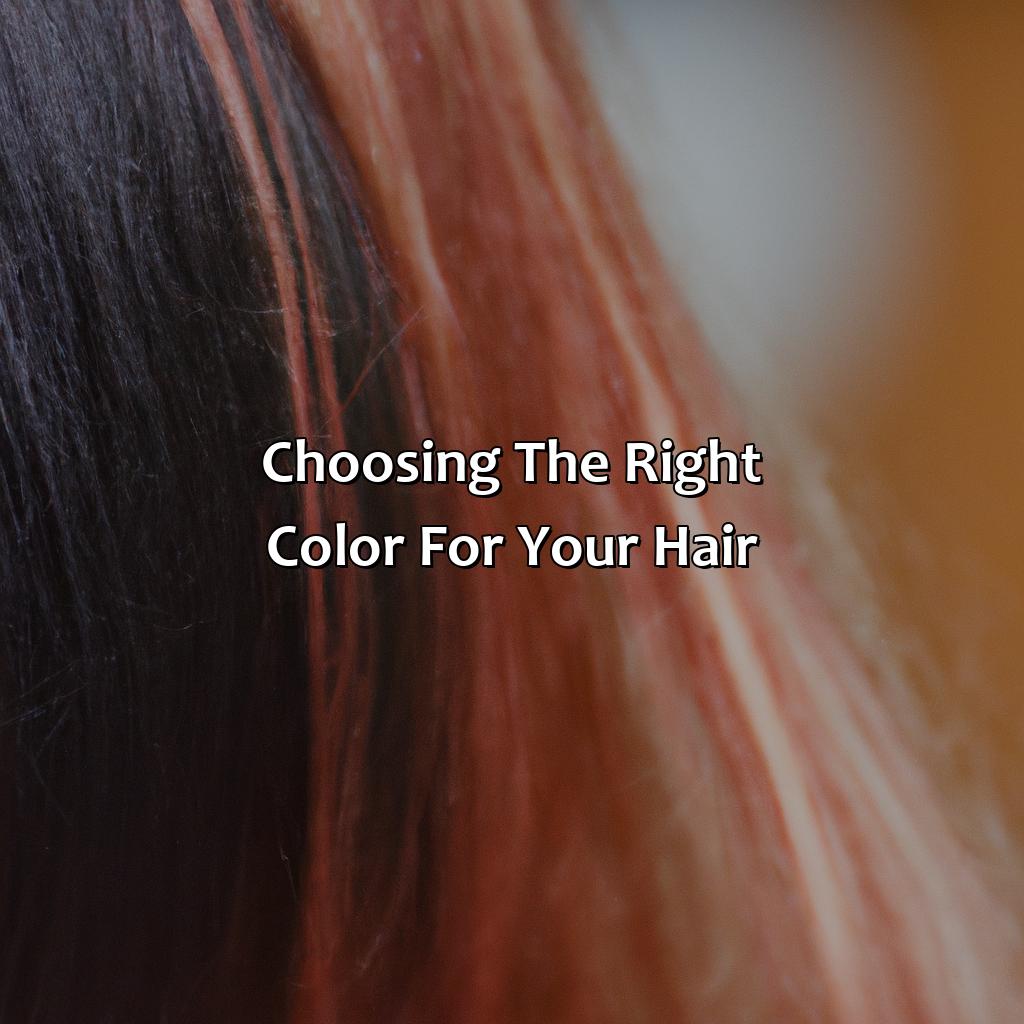
Photo Credits: colorscombo.com by Wayne King
Choosing the ideal hair hue for you is a complex task. Hair type, texture and pigmentation must be taken into account.
To get the best results, it is wise to ask a professional colorist. They can help you navigate the various hair color chart options.
In this article, we will explore two subsections:
- Factors to Consider
- Professional Consultation and Color Chart
This should aid you in making the best hair color transformation choice.
Factors to Consider
To ensure that the right color is chosen for your hair during a single process coloring, it is important to consider various factors related to your hair type, texture, and pigmentation. The following are key considerations:
| Column 1 | Column 2 |
|---|---|
| Hair Type | Straight, Wavy, Curly |
| Hair Texture | Fine, Medium, Coarse |
| Hair Pigmentation | Natural Color Vs. Artificial Pigments |
| Hair Color Spectrum | Warm Colors (Reds and Yellows) Vs Cool Colors (Blues and Greens) |
| Hair Color System | Levels of Lightness And Darkness |
| Hair Color Options | Permanent, Demi-Permanent or Semi-Permanent |
Additionally, it is recommended to consult with a professional stylist and refer to a color chart before choosing a shade. It is also important to avoid drastic changes between natural hair color and the desired hue.
For best results with single process coloring, properly preparing hair through regular conditioning treatments will help maintain healthy hair cuticles that better absorb the pigment. Furthermore, patch testing should be conducted beforehand for any allergic reactions.
After application, certain products can aid in maintaining vibrant color such as moisturizing shampoos and finishing sprays.
While professional application can provide more advanced techniques; in-office service comes at extra cost. DIY options may be suitable for those looking for at-home solutions without breaking the bank.
Overall these considerations are essential while using single-process coloring systems in order to achieve long-lasting results as well as ensure healthy-looking hair.
Consulting a professional colorist is like a trip to the hair salon – you leave with more than just great hair, you leave with the knowledge of proper hair care and pigmentation.
Professional Consultation and Color Chart
Professional Color Consultation and Pigmentation Chart
Consulting with a colorist or qualified hair salon professional helps determine the best hair pigmentation process for individualized needs. A color chart, which displays shades, undertones, and tints, provides an accurate representation of hair color options. Factors like skin tone, eye color, natural hair coloration, and desired result must be considered before choosing the correct single process coloring option.
The table below showcases some of the most sought-after brands with their distinctive palettes.
| Brand | Palette |
|---|---|
| Wella | Koleston Perfect |
| Redken | Shades EQ Gloss |
| L’Oréal Paris | Excellence Crème |
| Schwarzkopf Professional | Igora Royal |
It’s essential to note that patch testing must be performed before proceeding with any form of hair pigmentation as allergies may occur.
Pro-Tip: Consult a professional when uncertain about the right product to choose or when itching to try a new shade. Before diving into color, make sure your hair is ready to take the plunge with proper care and patch testing to avoid any damage.
Preparation for Single Process Color Application

Photo Credits: colorscombo.com by Robert Anderson
For a successful single process color application, take care of your hair! Hydrate it properly. Do a patch test first to see how it’ll react to chemicals. When patch testing, consider hair porosity, type, and health. Hydration and maintenance are crucial to avoid breakage and split ends.
Hair Care and Maintenance Prior to Application
Prior to applying single process color, it is crucial to ensure your hair is in optimal condition. Proper hair hydration promotes a healthy scalp and ensures color longevity. Damaged or dry hair can lead to breakage, split ends and an uneven application of color. To prepare for single process coloring, it is recommended to deep condition your hair, avoid using heated styling tools and limit exposure to sunlight as much as possible. These steps will help maintain the health of your hair and improve its ability to absorb color evenly.
Additionally, it is crucial to ensure that any previous chemical treatments are fully grown out before undergoing a single process coloring. This includes being mindful of using clarifying shampoos or any harsh cleaning agents on your scalp prior to the coloring session.
Pro Tip: Consider consulting with a professional stylist for an in-depth assessment of your hair’s current health and recommendations to prepare for single process coloring.
Patch testing: Because knowing your hair’s porosity, type, texture, and pigmentation before a chemical process is better than a bad reaction.
Understanding Patch Testing
Patch testing is a crucial step that must be performed before any hair coloring procedure. It involves the application of a small amount of colored mixture to the skin behind the ear or on the forearm to check for any allergic reactions. This process helps protect an individual against potential adverse skin reactions caused by single process color.
During patch testing, one must consider factors such as hair follicles, hair porosity, hair type, hair texture, hair pigmentation, and chemical process. These elements determine how the coloring product will interact with the scalp and skin. As different individuals have unique features, it is essential to perform patch tests for both professional and DIY applications.
It is important to note that patch testing should not be skipped or neglected. Even if you have previously had no issues with coloring products or other cosmetics in the past, it does not guarantee that there will be no adverse reactions this time.
Not performing patch tests may lead to severe consequences such as irritation, redness of skin, blistering rashes and permanent damage to your hair and scalp. Therefore taking precautions like performing a patch test may help prevent unwanted outcomes.
Remember than an ounce of prevention is better than cure., So ensure you do a thorough patch test before indulging in deep Single Process Coloring procedures.
Transform your hair with these simple steps of single process color application, no magic required.
Application Procedure of Single Process Color
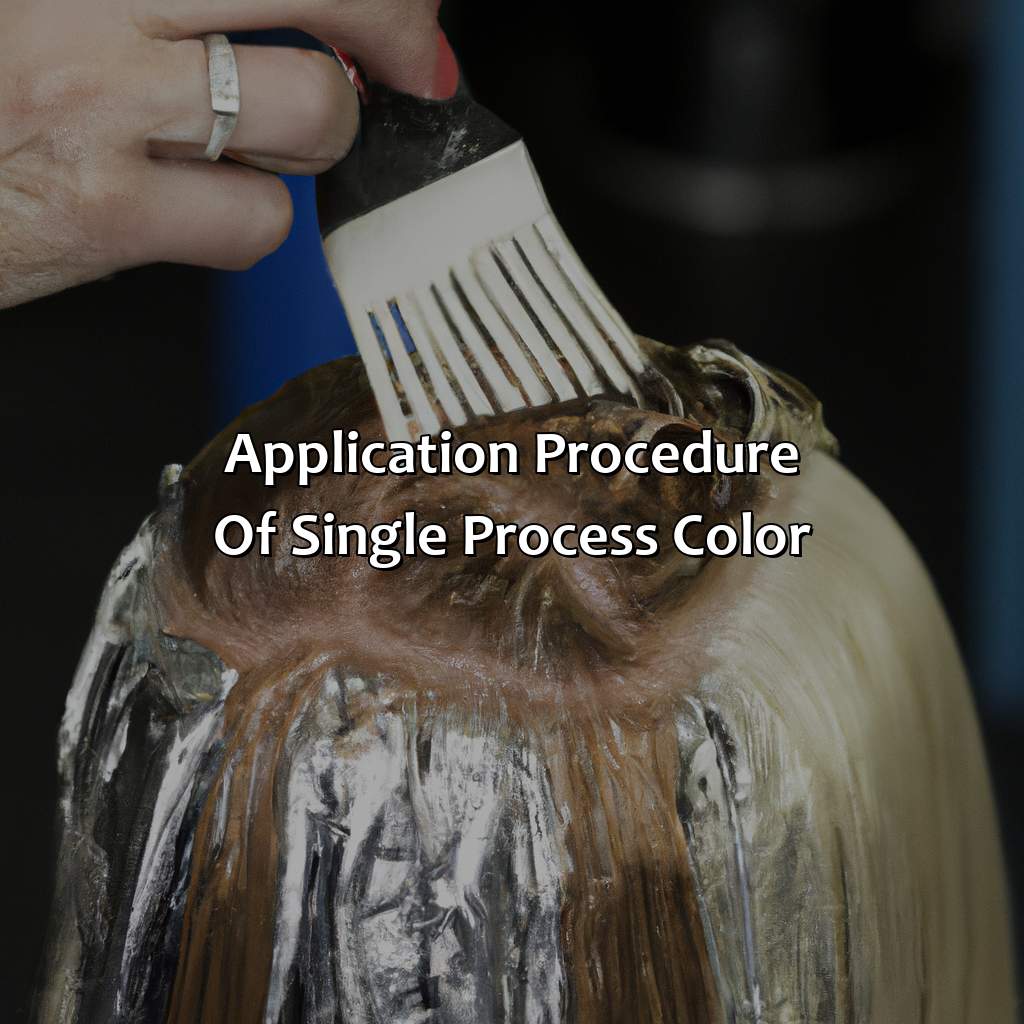
Photo Credits: colorscombo.com by Ronald Scott
Achieving a perfect hair dye? Try single process color! It gives you uniform hair color that looks great with your natural hair. This step-by-step process takes into account your hair texture, porosity, type, pigmentation, density, and color intensity. Watch out for common mistakes when dyeing your hair. Like damaging the follicles, which can cause breakage, split ends, and dehydration. All of these can harm your hair health.
Step-by-Step Process of Applying Single Process Color
When it comes to applying single process color, there are structured steps that should be followed to achieve the best results. The application procedure involves the use of a single shade of dye on the hair for added vibrancy and color.
- First, start with clean and dry hair.
- Section the hair in four parts using clips or bands.
- Begin applying the dye from the root to the tips of each section, using a brush or an applicator bottle.
- Make sure to saturate every strand of hair with dye evenly.
It’s important to note that factors such as hair texture, porosity, type, pigmentation, and density can affect color saturation and intensity. A professional consultation could help choose an ideal shade that matches natural pigment and delivers the desired result effectively.
It is essential to consider using a pre-color treatment product for optimum color application results. Furthermore, it is advisable to avoid mistakes like missing any spots while applying dye or leaving it too long on hair after application since this could cause damage like breakage.
The proper maintenance of colored hair helps keep its vibrancy and quality for longer periods with recommended products like sulfate-free shampoos and conditioners specifically for colored hair types.
True Fact: According to eSalon.com statistics, 64% of women believe their confidence level is increased when they have freshly dyed hair.
Skip the mistakes and avoid a hair dye disaster by properly considering your hair follicles, hydration, and overall hair health.
Common Mistakes to Avoid During Application
To ensure a successful single process color application, it is crucial to avoid making mistakes that could lead to hair damage and unsatisfactory results. Here are some tips to help you achieve your desired hair color without compromising the health of your hair follicles.
- Overlapping: Applying hair dye repeatedly on already colored or recently colored hair can cause serious damage such as breakage, split ends, and dehydration. It’s crucial to apply the product only once and ensure that it does not overlap with previously treated hair.
- Skipping patch test: A patch test is performed by applying a small amount of the dye on the skin behind the ear or on the inner arm to check if there’s any allergic reaction. Never skip this step as it can prevent irritation or other allergic reactions.
- Neglecting hydration: Coloring can dehydrate your hair strands, causing them to become brittle and prone to breakage. It’s essential to keep them hydrated by applying deep conditioning treatments regularly.
- Over-processing: Going beyond recommended processing time, or using too much heat while drying can over-process your hair which results in damage, dryness and breakage.
- Using wrong developer volume: The developer volume determines how much lift and deposit you’ll get from your dye. Choosing a higher volume than needed for reaching a specific shade or level of lift may cause more damage.
It is vital to understand that every individual has different types of hair textures, patterns so it’s always better to seek advice from professional colorists before starting a DIY coloring process at home.
Hair coloring was initially practiced in Ancient Greece as a sign of sophistication among women who would lighten their hair with chalk powder. Later technology advancements lead this particular category in developing single process colors formulations resulting in minimal harm with maximum benefits for achieving desired shades effortlessly.
Want to keep your hair color vibrant and full of life? Don’t skip out on post-coloring hair care, because a little bit of maintenance goes a long way in achieving hair radiance and color longevity.
Post-Coloring Hair Care

Photo Credits: colorscombo.com by Douglas Thompson
Keep your hair vibrant and shiny! To do this, protect it from damage and color fading. Get the best products for post-coloring hair care at your hair salon. Remember your hair’s texture, type, density, and porosity when selecting your hair-care routine.
Stay tuned for our top tips on the best products to maintain optimal hair health and color.
Tips for Maintaining Vibrant and Healthy Hair Color
Maintaining the vibrancy and health of hair color is crucial to keep hair looking beautiful and fresh. Here are some tips to help you preserve your stunning color:
- Consider using hair care products specifically designed for color-treated hair, such as color-protecting shampoos and conditioners.
- Protect your hair from UV rays by wearing a hat or using products that contain UV filters.
- Avoid heat styling tools as they can cause damage and fade the color. Use heat protecting sprays while styling if necessary.
- Pay attention to your hair texture, type, density, porosity, and damage levels when selecting a routine that works best for you.
- Schedule regular touch-up appointments to keep your color looking fresh.
It is important to note that every person’s hair is different in terms of texture, type, density, porosity, and damage levels. Therefore, understanding how these variables affect your colored hair enables you to take proper precautions to maintain its health. Additionally, it is always wise to follow suggestions from a trusted hairstylist who understands your specific needs.
As much as prevention goes a long way; effective home care routines need tailoring based on one’s individual needs. With damaged or porous hair types consider conditioning more regularly powerfully because such variants tend to dry quickly hence prone too excessive fading over time. Whereas with thicker textures extending wash days increases longevity by reducing the frequency of washing sessions cutting back on stripping out healthy oils which protect color pigments embedded within the fibers.
Remember not all products work equally well for each individual. In case of confusion, consult with a professional stylist before purchasing new products since requesting sound advice on what would work best tailored towards one’s situation provides valuable insights saving both time and money down the road.
Keep your hair dye looking fresh and salon-worthy with these top recommended products for post-coloring hair care.
Recommended Products for Post-Coloring Hair Care
After coloring your hair, it is essential to use the right products for post-coloring hair care. These products not only maintain the color but also nourish and strengthen the hair strands.
- Color-protecting shampoo and conditioner – These products are formulated to protect and extend the life of hair dye. They contain ingredients that shield the color from fading due to harsh chemicals or UV rays.
- Leave-in conditioner – It is a great addition to your post-coloring hair care routine as it hydrates and tames frizz without weighing down the tresses.
- Hair oil – This product improves hair texture and promotes growth. It also protects the hair from environmental damage while trapping moisture in.
It is important to choose products that address specific concerns like dryness, breakage, or frizziness. Always read product labels and ask a professional hairstylist for recommendations.
For optimal results, use color-safe products regularly between salon visits. Professional color maintenance treatments like glosses can be done at a hair salon for more intensive care.
Why trust yourself with a hair color chart when you can have a professional do the charting for you?
Professional vs. DIY Single Process Color Application
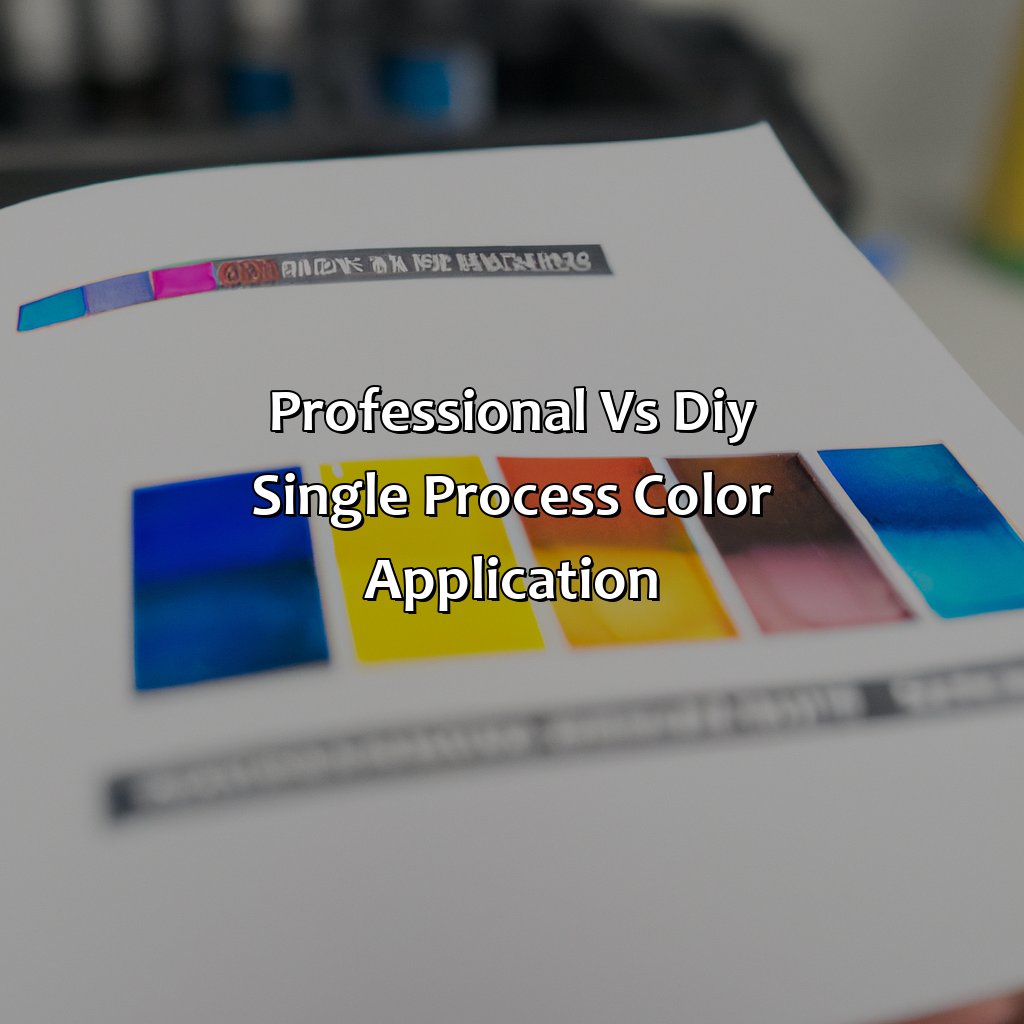
Photo Credits: colorscombo.com by Keith Brown
Learn about the various hair coloring options. This section looks at the advantages and disadvantages of two main methods: professional application and DIY application. Professional coloring offers hairstyling advice, more options, and reduced hair damage. DIY coloring offers more flexibility but can cause hair damage and lower-quality results.
Advantages and Disadvantages of Professional Coloring
Professional Coloring: Pros and Cons
Professional coloring refers to the hair color application done by a qualified colorist at a hair salon. This process involves using high-quality products and tools to ensure perfect results without causing damage to the hair. Let’s explore some advantages and disadvantages of this method of hair transformation.
Advantages:
- Expertise: Professional colorists undergo training and have vast experience in hair coloring. They are aware of the latest trends, techniques, and products for different types of hair.
- Customization: Colorists can personalize your hair color by analyzing your skin tone, eye color, and lifestyle to come up with the most suitable shade for you.
- Consistency: A professional’s job ensures an even application of color and full coverage, leading to a uniform look all-over – something that may be challenging during DIY sessions at home.
- Advanced Hair Care: Salon professionals use high-end products that maintain your hair quality during the coloring process. They also provide after-care services aimed at preserving your new look longer.
- Confidence-building results: You feel more confident when you leave feeling that your desired outcome has been achieved when leaving a salon transforming your image,
Disadvantages:
- The cost can be significantly higher than performing a DIY session at home- sometimes unaffordable for people every few weeks.
- Limited schedule options: The salons may not be open at convenient times or on Sundays depending on how urgent one wants their transformation done.
- Lengthy wait time: Booked out will mean waiting for many days before you are able to see somebody meaning it may take more time than usual necessary.
- Possible allergies: Although rare, you might have an allergic reaction that is severe during application if you’re not careful with what ingredients are being used.
- Timing: A busy salon may mean rushing your service and when distracted or pressured, mistakes can happen.
Coloring your hair at home is plausible, but nothing beats the quality and expertise offered by a professional colorist in a salon. They are well-equipped to deliver beautiful and long-lasting results while prioritizing your hair’s care and health. However, for those who cannot afford to go for frequent appointments or have limited options of available professionals near them, DIY sessions could prove valid if addressed with care.
To maximize the benefits of professional coloring sessions, you should communicate effectively with your colorist on what you need from consultation onwards so that they can personalize their service as necessary. Ultimately relying on these services also means cutting down on the cost implication arisen due to possible damages caused by pre-lightening/bleach that may require lengthier haircare routines post-appointment.
DIY hair dye: because who needs healthy hair follicles and proper hair pigmentation anyway?
Advantages and Disadvantages of DIY Coloring
DIY Coloring has its own share of advantages and disadvantages. It requires a great deal of understanding of hair dye, hair follicles, and the chemical process that takes place in coloring hair. However, it can save time, money and be done in the comfort of one’s home.
- Advantages:
- It can be cheaper to do DIY Coloring at home instead of going to a salon.
- It saves travel time, waiting time, and eliminates the need to book an appointment.
- The freedom to experiment with various color options and directions during the process.
- No guilt for avoiding harsh chemicals found in commercial dyes that harm hair pigmentation.
- Flexibility to use natural ingredients like henna that cause minimal or no hair damage or breakage.
- The option to wash or rinse hair frequently after application for better hydration and healthier results than professional coloring.
- Disadvantages:
- The risks associated with applying chemicals directly on hair without proper knowledge which may cause severe damage or hair breakage that salon professionals could have avoided.
- In case something goes wrong during the coloration process, fixing any mistakes becomes much harder without professional help.
- Inaccuracy with expected color results due to difficulty in judging the volume of dye required.
- Difficulty in matching the exact shade desired.
- Inadequate Hair Hydration despite frequent washing post-coloring results in decreased longevity of newly colored locks leading to quick fading or dullness.
While DIY Coloring saves both money and effort if done incorrectly it can lead to significant regret as mentioned above. Therefore opting for Salons is more advisable as they ensure quality application and use the right products, techniques to avoid hair damage.
If one chooses DIY Coloring, it’s essential to follow instructions carefully and consult a professional if anything goes wrong. Additionally, using hydrating shampoos, conditioners and treatments after coloring helps to repair hair health lost during the chemical process. Avoiding heat styling or excessive UV exposure can also help maintain the color’s longevity.
Five Facts About Single Process Color:
- ✅ Single process color is a type of hair coloring where a single color is applied to the entire head of hair. (Source: Hair.com)
- ✅ Single process color is typically used to cover gray hair or change hair color to a different shade. (Source: Matrix)
- ✅ The process involves applying hair dye that contains ammonia and peroxide, which opens up the hair cuticles to allow the color to penetrate. (Source: StyleCraze)
- ✅ Single process color can be done at home or in a salon with the use of professional products. (Source: L’Oreal Paris)
- ✅ Maintenance is required every 4-6 weeks to touch up roots and maintain color vibrancy. (Source: Byrdie)
FAQs about What Is Single Process Color
What is single process color?
Single process color is a method of coloring hair where one color is applied to the entire head of hair. This process involves applying a permanent or demi-permanent hair color product to the hair and leaving it on for a specific amount of time before rinsing it out.
Can single process color be used to cover gray hair?
Yes, single process color can be used to cover gray hair. In fact, it is one of the most common uses of this hair coloring method. However, it is important to note that the effectiveness of single process color on gray hair will depend on the individual’s hair type and the color used.
How long does single process color last?
The longevity of single process color depends on various factors such as the individual’s hair type, lifestyle habits, and the specific product used. Generally, single process color can last for up to six weeks but may require touch-ups depending on the rate of hair growth and the desired hair color.
Can single process color be done at home?
Yes, single process color can be achieved at home using a variety of products available on the market. However, it is important to carefully read and follow the instructions on the product packaging and to perform a patch test to ensure that you are not allergic to the product.
What are some tips for maintaining single process color?
To maintain the vibrancy and longevity of your single process color, it is recommended to use sulfate-free shampoos and conditioners specifically formulated for colored hair. Additionally, minimizing heat styling and using a UV protectant when outside can also help preserve the color.
Is single process color safe?
When done correctly and using reputable products, single process color is generally considered safe. However, it is important to note that any type of hair coloring process does carry some potential risks, such as allergic reactions and damage to the hair. It is always best to consult with a professional stylist and perform a patch test before coloring your hair.
